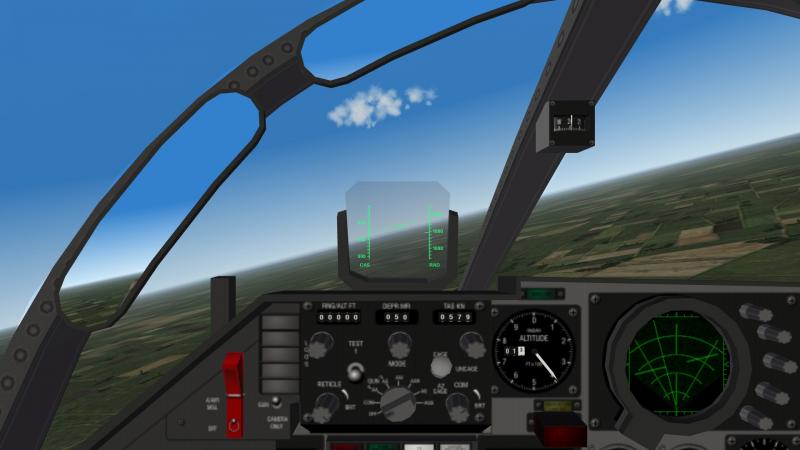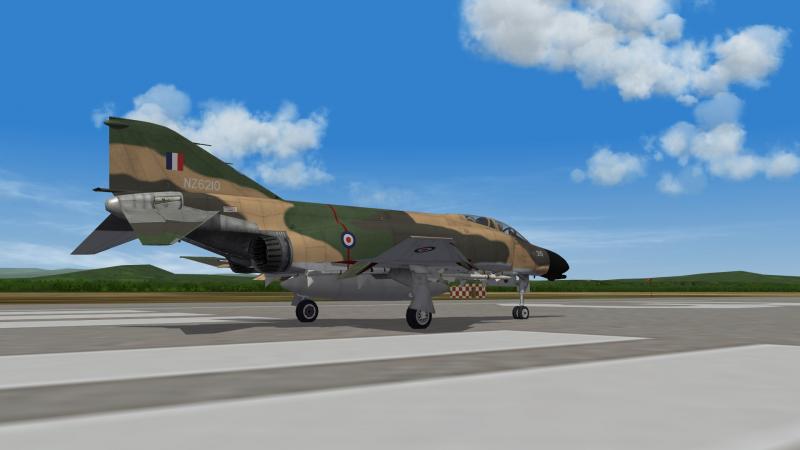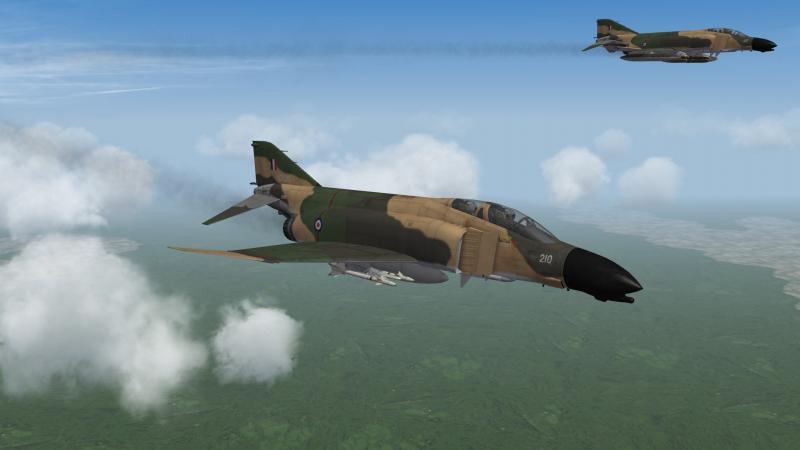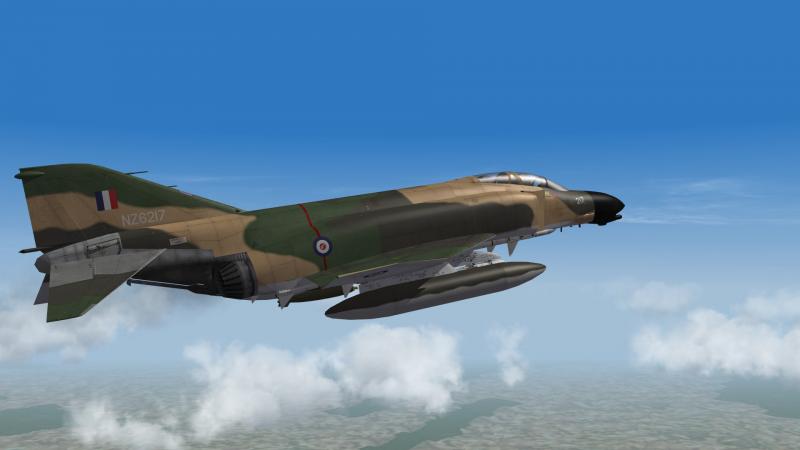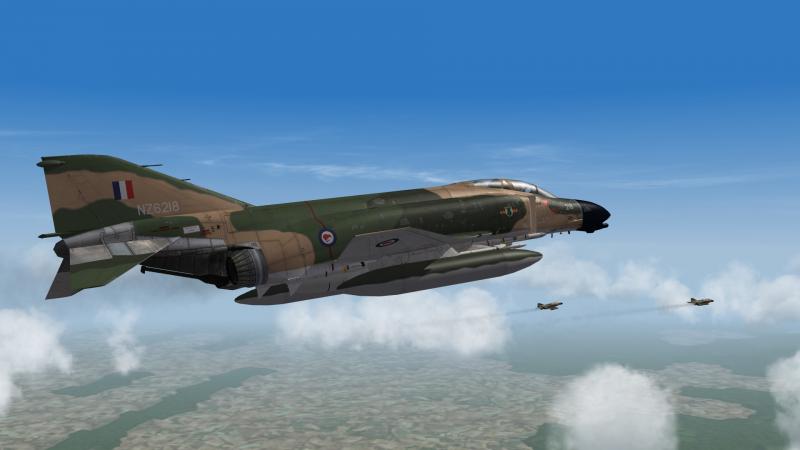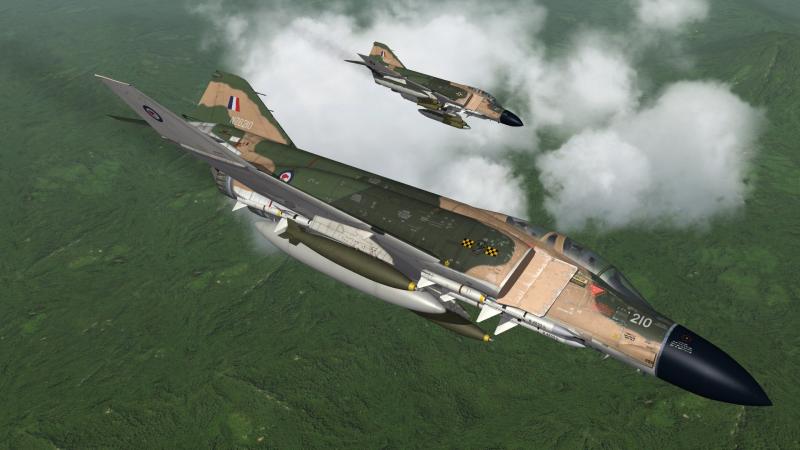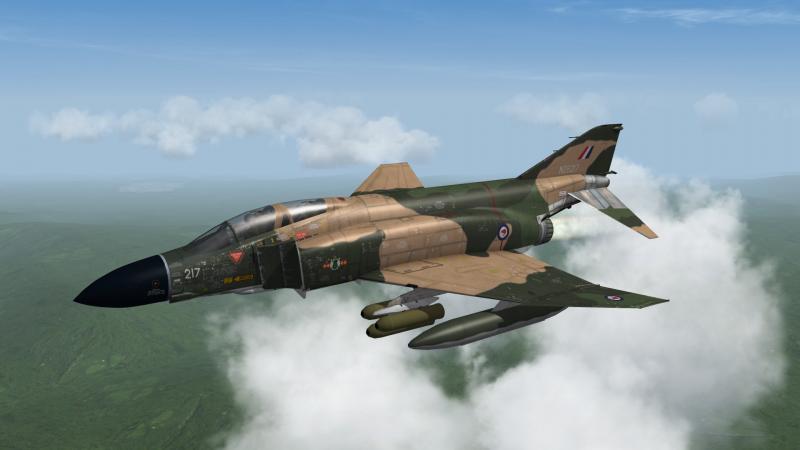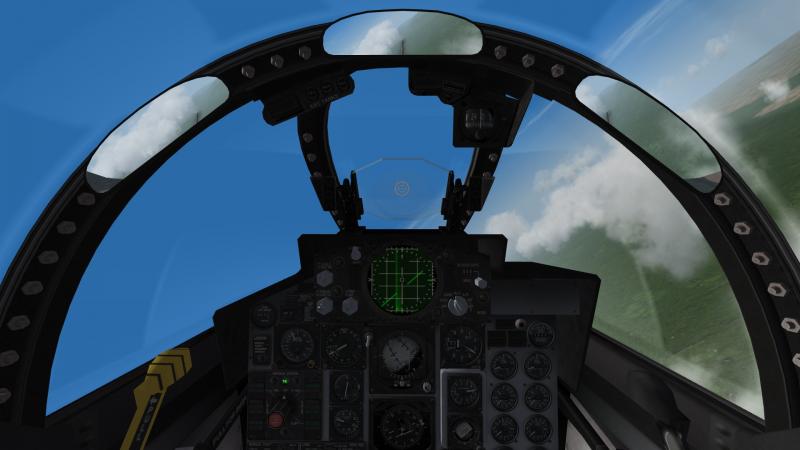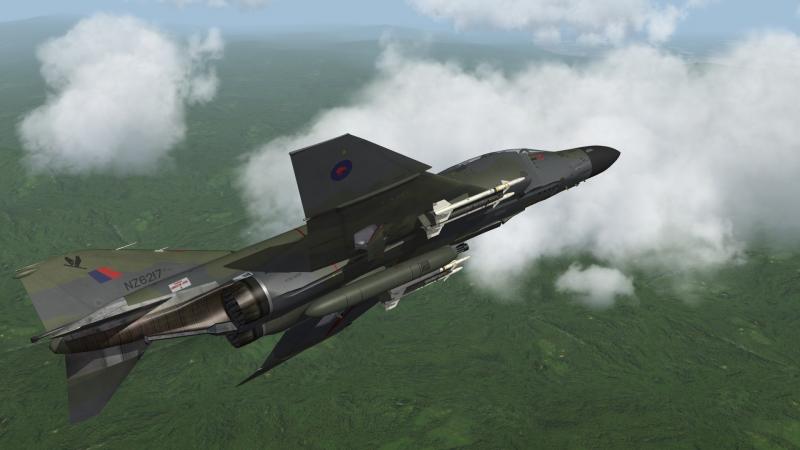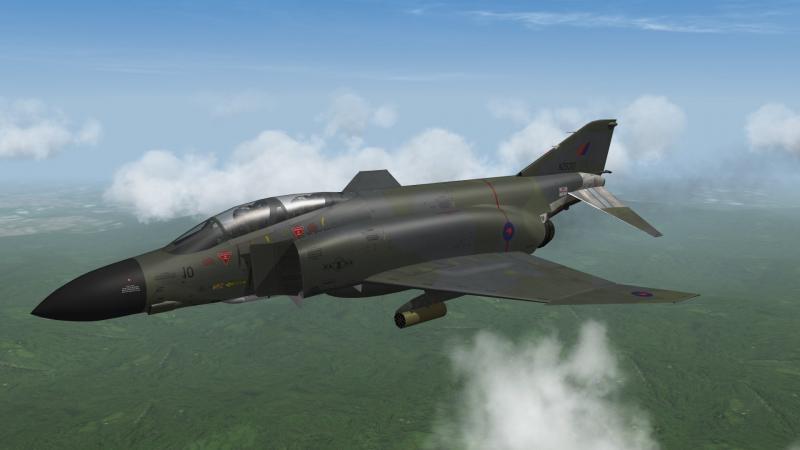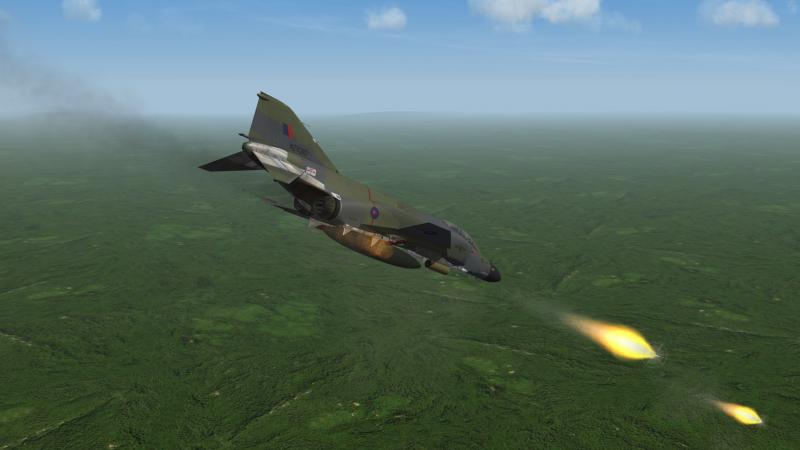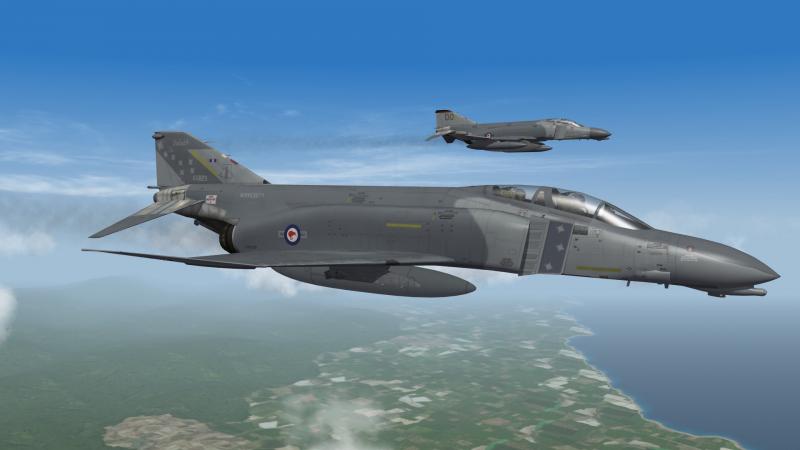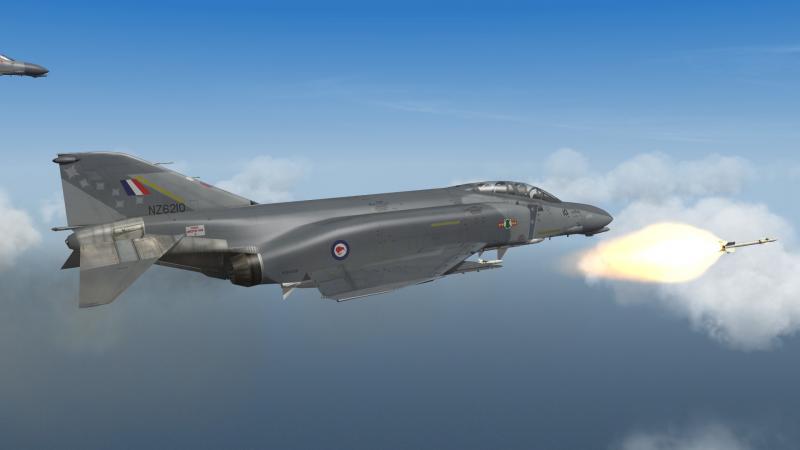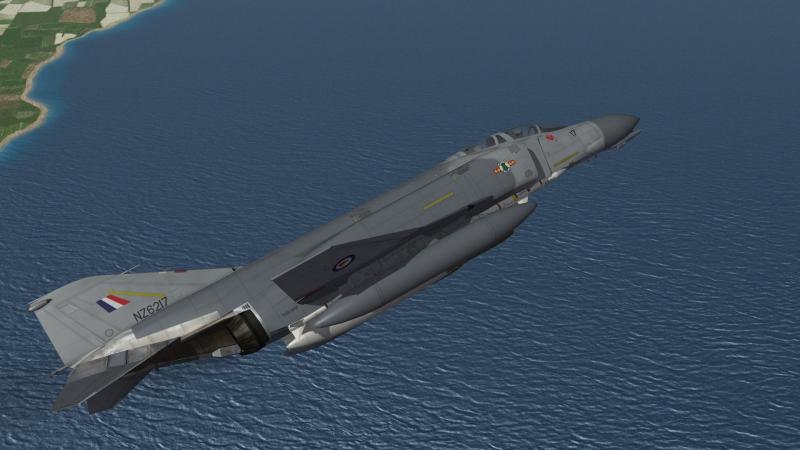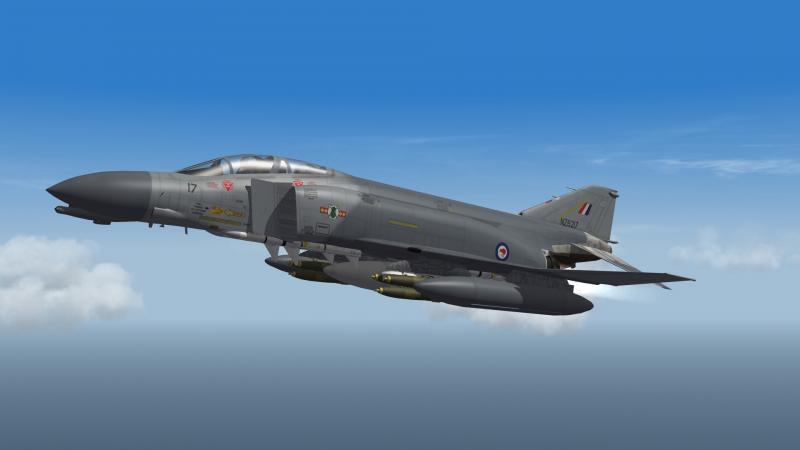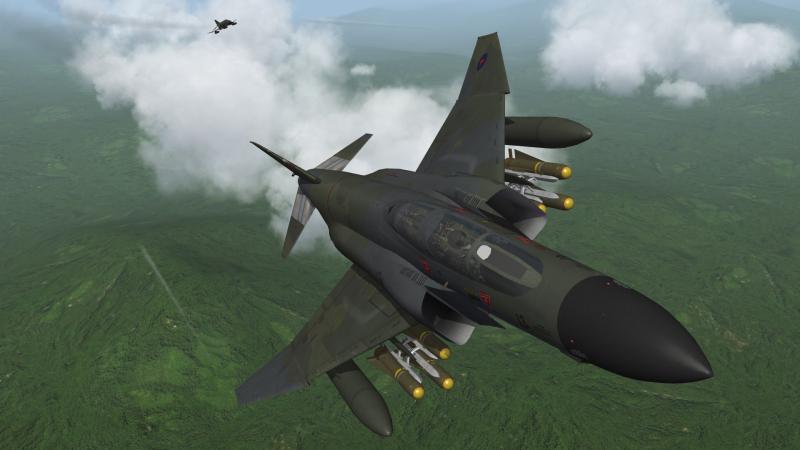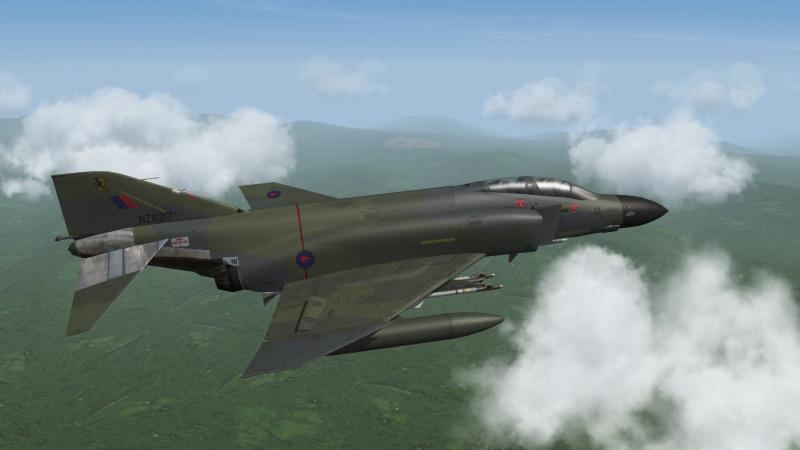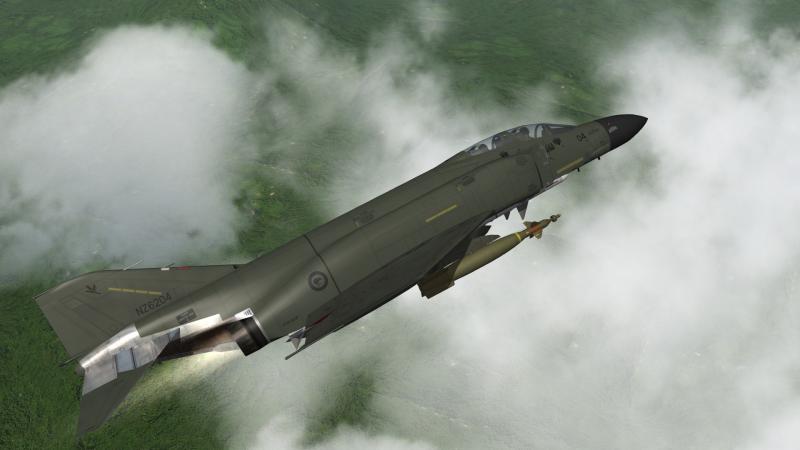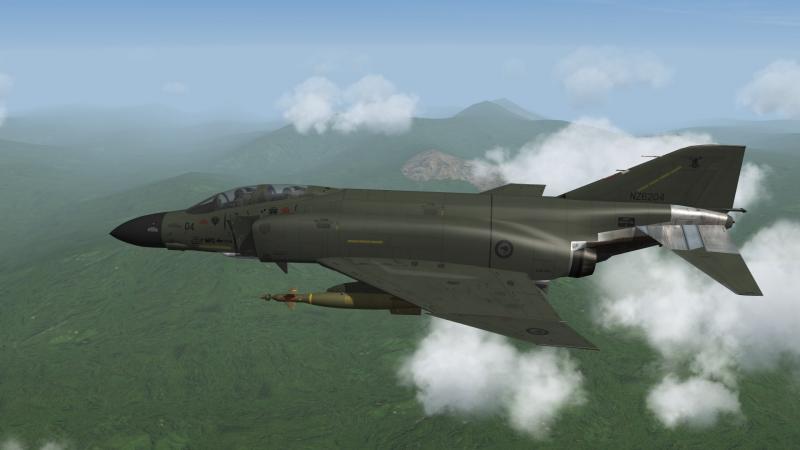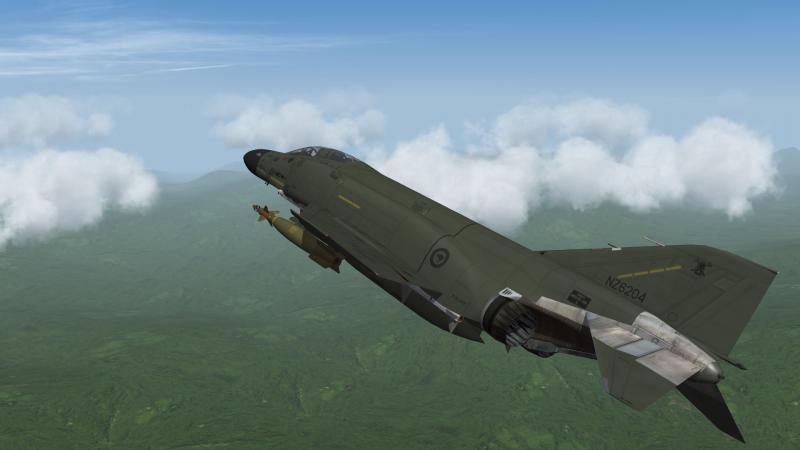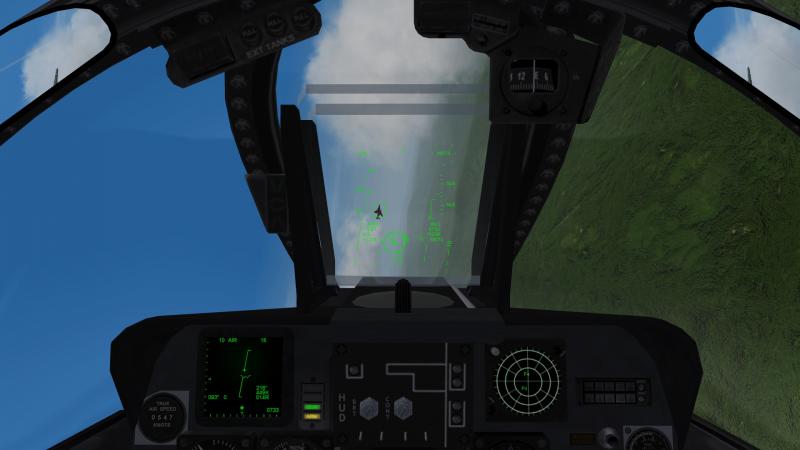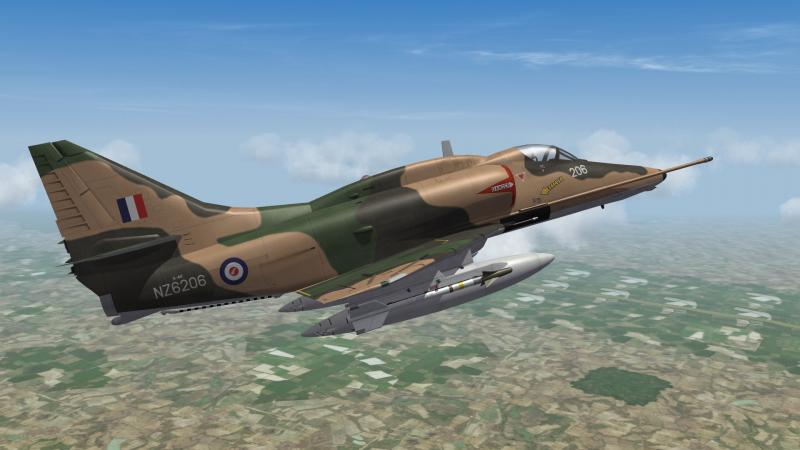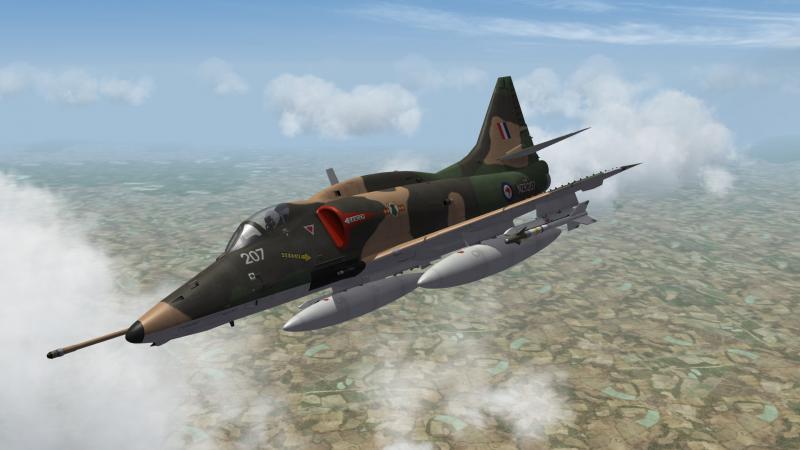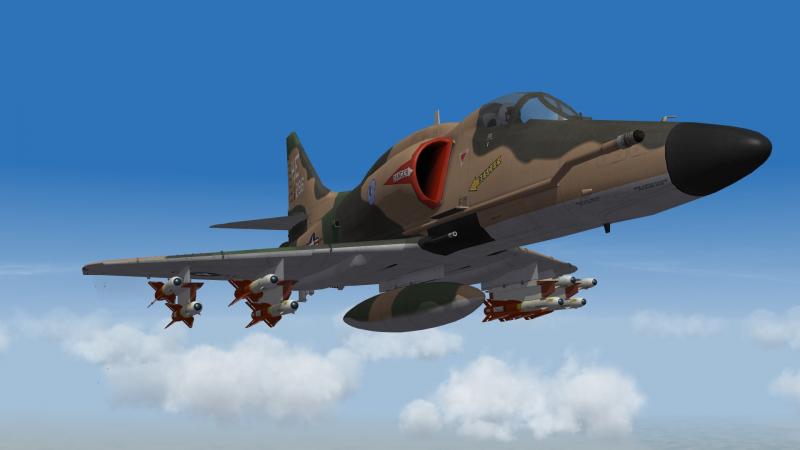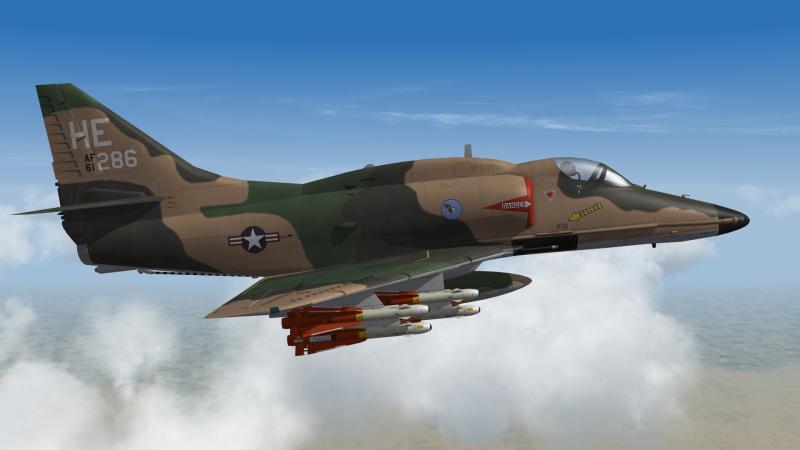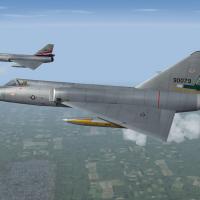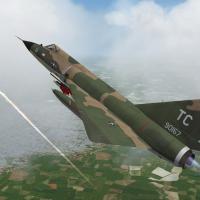-
Posts
2,080 -
Joined
-
Last visited
-
Days Won
28
Content Type
Profiles
Forums
Gallery
Downloads
Store
Everything posted by dtmdragon
-
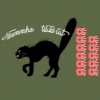
Kiwi Bearcats
dtmdragon replied to Spinners's topic in Thirdwire: Strike Fighters 2 Series - Sci-Fi/Anime/What If Forum
Awesome! -

No Feedbag
dtmdragon replied to Piglet_7's topic in Thirdwire: Strike Fighters 2 Series - Mods & Skinning Discussion
I have made a HUD for the F-111D based on a reference PDF If found if your interested for an update to the F-111 pack: ECM for all the F-111 models needs to be added to as it was a key feature of the F-111 avionics package: [Fuselage] ....... SystemName[030]=ALQ94/ALQ137 SystemName[031]=ALQ94_2/ALQ137_2 // Internal ECM -------------------------------------------------------- [ALQ94/ALQ137] SystemType=ECM_JAMMER JammerType=DECEPTIVE_JAMMER JammerStrength=35.0 MinFreq=2.0 MaxFreq=20.0 CanJamCW=TRUE [ALQ94_2/ALQ137_2] SystemType=ECM_JAMMER JammerType=NOISE_JAMMER JammerStrength=35.0 MinFreq=2.0 MaxFreq=20.0 CanJamCW=TRUE "The F-111A's "Mark I" avionics suite included as the primary sensor system the General Electric (GE) AN/APQ-113 radar, a multimode system with some air-to-air capability for self-defense, but unsurprisingly focused on the strike mission. It shared the nose radome with a Texas Instruments AN/APQ-110 TFR system, with two little radomes flanking the base of the AN/APG-113 radar dish. The nose radome hinged open to the right for servicing. The primary navigation system was an AN/AJQ-20A inertial navigation system (INS), complemented by a TACAN radio navigation beacon receiver. Defensive countermeasures included: [*]AN/ALE-28 chaff-flare dispensers. [*]AN/APS-109 radar warning receiver (RWR). [*]Sanders AN/ALQ-94 noise / deception jammer; the RWR and jammer were fitted in cylinders flanking the engine exhaust. An external jammer or other "pod" could be carried on a station on the rear belly between the aircraft's ventral fins. Some weapons bay loads also permitted carriage of a pod underneath the weapons bay." "AN/ALQ-94: aircraft combined pulse mode and CW deception and noise jammer with three subsystems covering low (E/F), mid (G/H) and high (I/J) bands with fore and, in some airframes, aft coverage mounted on F/EF-111A/E/F, Replaced by ALQ-137 (ALQ-94 with greater reliability)" -
Background (factual): In mid 1964 Operational Requirement No. 5/Air called for a tactical combat aircraft to replace the Canberra. Specifically a long range aircraft with the primary role of counter-air/interdiction and secondary roles of close air support and air defense. In June 1965 The Chief of Air Staff, Air Vice-Marshal (AVM) Morrison was quoted as wanting 18 F-111 aircraft for the RNZAF at a cost of £1.5 million per aircraft. The public and media supported the idea but the Chief of Defense Staff (who was a Naval Officer) and the acting Prime Minister publicly opposed the purchase. In August 1965 the Chiefs of Staff Committee rejected the idea of acquiring long-range interdiction aircraft and in September agreed that close air support should be the primary role of the new combat aircraft. In December came Air Staff Requirement No. 12 with the following requirements of the new combat aircraft: - Ability to provide effective air support to ground forces. - Highly reliable and robust - Self defense capability to evade or counter supersonic interceptors and surface-to-air missiles. - Long range. - Ability to operate closely with American and Australian forces. By May 1966 the RNZAF had finished evaluating six candidate aircraft: - F-4C Phantom II - A-7A Corsair II - Mirage IIIO - F-5A Freedom Fighter - F-104G Starfighter - A-4E Skyhawk In August 1966 the RNZAF officially asked the government to purchase 16 F-4 Phantoms at a total cost of £19 million. Now remember AVM Morrison making it known he wanted the F-111? He would later go on to admit he never wanted the F-111 he had wanted the F-4 all along but given the cost of the F-4 he wanted to make it look more attractive (cost wise) by putting it next to the F-111. The minister of Defense then announced the final stage of the evaluation had been reached and a decision was a few weeks away. The purchase of the F-4 seemed to be all but done... BUT the Treasury department now intervened and recommended purchasing the F-5! The RNZAF High Command was furious! But ultimately powerless to halt the path to purchasing the A-4 Skyhwak that had just begun. Over the next year the RNZAF, Cabinet Defense Committee, Treasury, the Finance Minister and the Chief of Defense wrangled over purchasing the F-4 or an alternative (F-5 or A-4). Then at the end of 1967 the New Zealand Currency was devalued and a squadron of F-4 Phantoms was now instantly out of New Zealand’s price range. It was either 11 Phantoms or 16 Skyhawks. So the Skyhawk it was. So if the Treasury Department hadn't intervened in the procurement process towards the end of 1966 it seems entirely likely that New Zealand would have placed and order for the F-4 Phantom II at the end of that year! And so I give you the F-4D Phantom II in RNZAF Service 1969 to 2002: I chose the F-4D as when the order would have likely been placed in late 1966/ early 1967 the F-4D was the current USAF production model as the first of the F-4E models were only just being built as part of the USAF F-4D contract. The RNZAF F-4D models are built to the same standard as the last USAF F-4D coming off the production line in the late 60's. However like the A-4K in real life they are 'fitted for but not with' ECM/ RHAW equipment. This means the wiring, sensors and cockpit RHAW display are installed but the actual 'black box' control units are not. The reason for this (as in real life with the A-4K) was not an economy measure as most references state (including the Third Wire manual) but because the equipment was in such demand by US forces for use in Vietnam. So the aircraft were delivered without them but with the intention of fitting them at a latter date. However that day simply never came and this is possibly where the additional cost of purchasing/ installing them played a part in it not happening. The Kiwi F-4D Phantoms are capable of caring the full range of the USAF Phantom arsenal including first generation smart weapons. However only the Mk 82/83/84 series bombs and unguided rockets are used by the RNZAF. For the air-to-air role the SUU-23/A gunpod, AIM-7E and AIM-9E are chosen with the AIM-4 Falcons performance in Vietnam causing the RNZAF to steer well clear of it. The Kiwi Phantoms are delivered in SEA colors with the old RAF style New Zealand Air Force roundels. But shortly after arriving in New Zealand the then current RNZAF Sliver Fern Leaf roundel is painted on. These only last till the end of 1970 when the current Kiwi roundel replaces it. Squadron badges are now starting to appear and the aircraft which are getting that infamous dirty Phantom worn look. F-4D Phantom II Delivery Markings 1969 F-4D Phantom II No. 75 Squadron Fern Leaf Roundels Late 1969 F-4D Phantom II No. 75 Squadron New Kiwi Roundels 1970 By 1973 the redundant RHAW display has been removed from the cockpit and so has the empty IRST pod from under the nose that was to house the RHAW gear. F-4D Phantom II No. 2 Squadron Late 1970's F-4D Phantom II No. 75 Squadron Early 1980's In the mid 80's the original SEA camouflage scheme is replaced by the European 1 scheme that better suits the New Zealand environment. F-4D Phantom II No. 2 Squadron 1984 F-4D Phantom II No. 75 Squadron Late 1980's By the early 80's the Kiwi Phantoms were showing their age and 1960's heritage. The RNZAF is faced with replacing or upgrading the Phantoms. Ultimately the government decides that upgrading the F-4D fleet is the most affordable option. In preparation for the upgrade 8 more F-4D Phantoms are purchased from the USAF in 1985. Unlike the current Kiwi Phantoms these aircraft had been upgraded in USAF service with countermeasure dispensers and a modern RWR which gave the RNZAF a taste of things to come. The USAF Hill Grey camouflage scheme on these aircraft is the most popular with the majority of Kiwi aircrew. F-4D Phantom II (78) Delivery Markings 1985 (Ex 179th FIS and 98th TFS) F-4D Phantom II (78) No. 75 Squadron Late 1985 F-4D Phantom II (78) No. 75 Squadron Late 1980's In 1986 a comprehensive $140 million upgrade program is undertaken. Known as project 'Kahu' the heart of the upgrade is replacing the old AN/APG-109 radar with the modern AN/APG-66(NZ) multi-mode radar. The cockpit is modernized with glass displays, HOTAS and a Ferranti wide-angle HUD. Survivability in increased with the ALR-66 RWR and ALE-40 countermeasure dispensers. The MIL-STD 1553B databus and Litton Industries LN-93 inertial navigation system are also installed. The airframes and engines are completely stripped down and given a life extension with almost all of the aircraft wiring replaced. A smoke abatement system is added along with low voltage formation lights. The aircraft also receive armament upgrades including the capability to fire AIM-9L, AIM-7M, AGM-65B/G and GBU-10 Paveway II laser-guided bombs. The old F-4 Phantom external center drop tanks are also replaced by the F-15 600 gallon HPC tanks as on USAF Phantoms. By the end of 1991 all New Zealand and ex USAF Phantoms have been upgraded to the 'Kahu' standard. F-4D 'Kahu' Phantom II No. 2 Squadron 1988 F-4D 'Kahu' Phantom II No. 75 Squadron Mid 1990's Little would change from now until their retirement in 2002 except for a move from the Euro1 camouflage to an all over dark green. F-4D 'Kahu' Phantom II No. 75 and No. 2 Composite Squadron 1997
-

What If Screenshot Thread.......
dtmdragon replied to Dave's topic in Thirdwire: Strike Fighters 2 Series - Screen Shots
And as a scale model: http://www.aircraftresourcecenter.com/Gal14/13501-13600/gal13588-P-47-Chen/00.shtm -
I had the same problem. To fix it I had to add a weight limit to the station that uses the Pave Track in the F-111F_data.ini file. Just make sure it is slightly higher then the weight of the Pave Track pod
- 26 replies
-
- f-111a
- lakenheath
-
(and 8 more)
Tagged with:
-

Strike Fighters 2 Screenshots
dtmdragon replied to Dave's topic in Thirdwire: Strike Fighters 2 Series - Screen Shots
Nice work mate you contributions to the world of Scooters is awesome! Mandatory screenshot: Early Kiwi A-4K Skyhawks that sill have their straight refueling probes and nose ECM pods -

Chaff on Navy F-4 but not USAF models?
dtmdragon replied to dtmdragon's topic in Military and General Aviation
Interesting stuff -
Anyone know why Navy F-4 Phantoms in Vietnam had internal chaff dispensers but the USAF models didn't?
-

What If Screenshot Thread.......
dtmdragon replied to Dave's topic in Thirdwire: Strike Fighters 2 Series - Screen Shots
-
View File 'What if' F-106A 'Extended Service' Skin pack 'What if' F-106A 'Extended Service' Skin pack - 7 Skins based on the early F-15A ghost greys colour scheme. - 2 Skins based on the later F-15A/C mod eagle colour scheme. - 1 Skin based on the grey two tone F-16 colour scheme. - 2 Skins which are FIS markings repainted over the SEA scheme of aircraft that have returned from Vietnam. - 1 Skin which is FIS markings repainted over the SEA Night scheme of aircraft that have returned from Vietnam. - Bonus ADC pilot in orange flight suit (you will have to edit the F-106A_data.ini to use it if you want to) You MUST have the SF2 F-106A pack installed: http://combatace.com/files/file/14246-f-106a-delta-dart-for-sf2/ Credits: - Pasko and his team that did the F-106A above. - Geary for the F-106A templates. Enjoy! Dan (Dtmdragon) Submitter dtmdragon Submitted 07/27/2015 Category What If Hangar
-
Version 1.0
177 downloads
'What if' F-106A 'Extended Service' Skin pack - 7 Skins based on the early F-15A ghost greys colour scheme. - 2 Skins based on the later F-15A/C mod eagle colour scheme. - 1 Skin based on the grey two tone F-16 colour scheme. - 2 Skins which are FIS markings repainted over the SEA scheme of aircraft that have returned from Vietnam. - 1 Skin which is FIS markings repainted over the SEA Night scheme of aircraft that have returned from Vietnam. - Bonus ADC pilot in orange flight suit (you will have to edit the F-106A_data.ini to use it if you want to) You MUST have the SF2 F-106A pack installed: http://combatace.com/files/file/14246-f-106a-delta-dart-for-sf2/ Credits: - Pasko and his team that did the F-106A above. - Geary for the F-106A templates. Enjoy! Dan (Dtmdragon) -
View File F-106A Delta Dart in Vietnam (What if) F-106A in Vietnam (What if) Background: During the late 60’s there were serious discussions in the USAF about deploying the F-106A to the conflict in Vietnam. Obviously this never eventuated but the possibility lead to project Six Shooter which saw a gun pack and an improved visibility canopy added to the F-106A. So what would the Delta Dart have looked like if it had served in the skies above Vietnam? In 1968 the USAF conducted a Tactical Evaluation to evaluate the effectiveness of existing tactical manoeuvres by USAF and USN combat aircraft against the MiG-21 Fishbed. It was called ‘Have Drill/ Have Ferry.’ The ADC evaluated the F-106 and found its radar capable of acquisition of the MIG and that radar snap-up attack could be used to exploit the MiG-21's lack of fire control. The F-106 could use better acceleration to get beyond MiG-21 speed limits. A direct result of this evaluation was the ADC recommendation to “expedite fitting the internal gun, redesigned canopy, radar warning and ECM equipment into the F-106”. So based on the above (factual) information I present the F-106A Delta Dart (69) ‘Nam’ To the SF2 F-106A I have added the following: - Permanently mounted M61A1 Gun Pack (Project Six Shooter) - Internal ALQ-100 ECM - Chaff dispensers - APR-25 RHAW (Audio only) - SEA camouflage (Day and Night) - Pilot in tiger stripped flight suit. - I have also applied the MA-1 FCS ECCM upgrade done to 314 F-106 in 1963. The ECCM system allowed the FCS to reject radar returns resulting from chaff dispersal by a target. As part of the upgrade a final modification resulted in increased missile performance. Modifications to the FCS permitted up to 35 percent more deflection of the Falcon missile’s control surfaces. This resulted in a more agile missile at launch, increasing the missile’s ability to react to a maneuvering target. To portray this in the game I have made changes to the F-106 avionics as well as a specific ECCS AIM-4F missile. Notes: - The AIM-4G has been changed to have no audible growl (It never had it) and is slaved to the radar. This more accurately portrays the employment of the IR guided Falcons. You will have to use the radar to know when you are locked on and in range. (Just like a F-106 pilot would have had to done in real life). - The weapon bay doors are manually activated, I prefer this as the animation doesn’t work with most missile shots when it’s set on automatic. - There is a specific version of the M61A1 gun for the F-106 as when installed in the F-106 its rate of fire was limited to 4500 rounds per minute. Credits for the original SF2 F-106A and SEA skin decals: Pasko Kesselbrut Column5, MKSheppard eburger68 Sundowner Dave DaniloE31 Pasko DaniloE31 Lexx Luthor 76.IAP-Blackbird Cliff7600 Enjoy! Dan (Dtmdragon) Submitter dtmdragon Submitted 07/21/2015 Category What If Hangar
-
Version 1.0
307 downloads
F-106A in Vietnam (What if) Background: During the late 60’s there were serious discussions in the USAF about deploying the F-106A to the conflict in Vietnam. Obviously this never eventuated but the possibility lead to project Six Shooter which saw a gun pack and an improved visibility canopy added to the F-106A. So what would the Delta Dart have looked like if it had served in the skies above Vietnam? In 1968 the USAF conducted a Tactical Evaluation to evaluate the effectiveness of existing tactical manoeuvres by USAF and USN combat aircraft against the MiG-21 Fishbed. It was called ‘Have Drill/ Have Ferry.’ The ADC evaluated the F-106 and found its radar capable of acquisition of the MIG and that radar snap-up attack could be used to exploit the MiG-21's lack of fire control. The F-106 could use better acceleration to get beyond MiG-21 speed limits. A direct result of this evaluation was the ADC recommendation to “expedite fitting the internal gun, redesigned canopy, radar warning and ECM equipment into the F-106”. So based on the above (factual) information I present the F-106A Delta Dart (69) ‘Nam’ To the SF2 F-106A I have added the following: - Permanently mounted M61A1 Gun Pack (Project Six Shooter) - Internal ALQ-100 ECM - Chaff dispensers - APR-25 RHAW (Audio only) - SEA camouflage (Day and Night) - Pilot in tiger stripped flight suit. - I have also applied the MA-1 FCS ECCM upgrade done to 314 F-106 in 1963. The ECCM system allowed the FCS to reject radar returns resulting from chaff dispersal by a target. As part of the upgrade a final modification resulted in increased missile performance. Modifications to the FCS permitted up to 35 percent more deflection of the Falcon missile’s control surfaces. This resulted in a more agile missile at launch, increasing the missile’s ability to react to a maneuvering target. To portray this in the game I have made changes to the F-106 avionics as well as a specific ECCS AIM-4F missile. Notes: - The AIM-4G has been changed to have no audible growl (It never had it) and is slaved to the radar. This more accurately portrays the employment of the IR guided Falcons. You will have to use the radar to know when you are locked on and in range. (Just like a F-106 pilot would have had to done in real life). - The weapon bay doors are manually activated, I prefer this as the animation doesn’t work with most missile shots when it’s set on automatic. - There is a specific version of the M61A1 gun for the F-106 as when installed in the F-106 its rate of fire was limited to 4500 rounds per minute. Credits for the original SF2 F-106A and SEA skin decals: Pasko Kesselbrut Column5, MKSheppard eburger68 Sundowner Dave DaniloE31 Pasko DaniloE31 Lexx Luthor 76.IAP-Blackbird Cliff7600 Enjoy! Dan (Dtmdragon)


